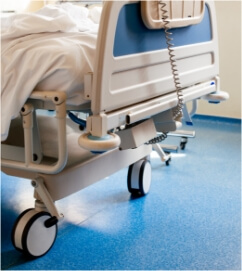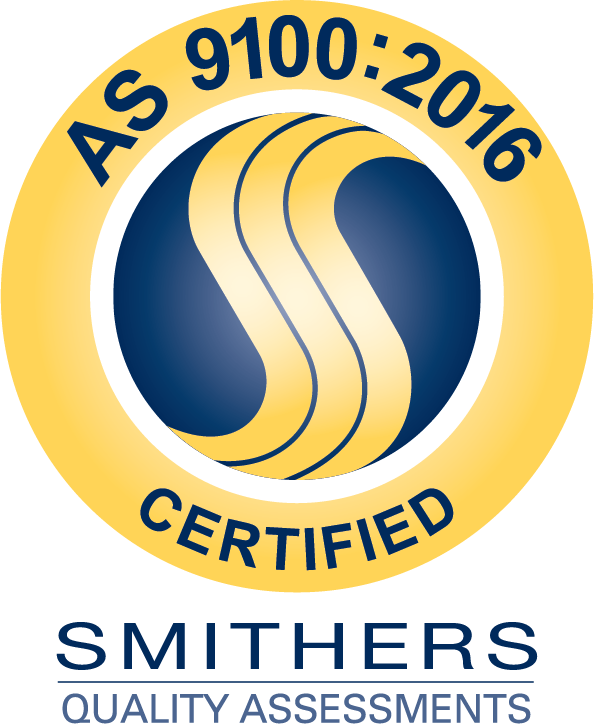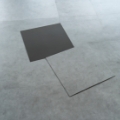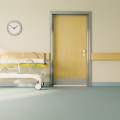Why Should You Care?
Because understanding the nuances of materials like medical-grade vinyl not only illuminates the transformations happening in healthcare but also offers invaluable insights for aerospace and defense sectors. From fabric for healthcare furniture to hospital-grade upholstery fabric and medical-grade vinyl flooring, we’ve got it all covered. So strap in and prepare to be enlightened!
What is Medical-Grade Vinyl?
Medical-grade vinyl is not your run-of-the-mill upholstery material. It’s engineered to meet the rigorous standards of healthcare settings, balancing a host of beneficial properties that set it apart from ordinary materials. So, what makes medical-grade vinyl so special?
Definition and Basic Properties
At its core, medical-grade vinyl is a type of plastic derived from ethylene and chlorine, forming Polyvinyl Chloride (PVC). But what elevates it from regular vinyl are its additional treatments and formulations aimed at providing enhanced durability, resistance to bacterial growth, and ease of cleaning—attributes crucial for healthcare applications.
The General vs The Specialized
While general-purpose vinyl finds its place in a variety of settings, from car seats to handbags, medical-grade vinyl is a specialist. It has to undergo additional tests for attributes like flammability, bio-compatibility, and resistance to various chemicals and stains. Simply put, when you’re dealing with medical-grade vinyl fabric, you’re dealing with the superhero of the vinyl world.
Meeting Stringent Standards
What gives medical-grade vinyl its credibility is its adherence to strict quality standards. In a world where even a tiny mistake can lead to grave outcomes, medical-grade vinyl stands tall, complying with FDA regulations and various ISO certifications. These standards are a testimony to the material’s reliability, making it a top choice for healthcare upholstery and various other applications.

Applications of Medical-Grade Vinyl in Healthcare
In a healthcare setting, each material chosen has a direct impact on patient well-being, hospital hygiene, and the overall functioning of medical facilities. Here’s a look at how medical-grade vinyl is shaping the face of modern healthcare.
Hospital Beds, Chairs, and Other Furniture
Ever sat in a medical chair and thought, “This is surprisingly comfortable”? You might have medical-grade vinyl to thank for that. When it comes to hospital-grade upholstery fabric, medical-grade vinyl offers a trifecta of benefits: comfort, hygiene, and durability. Its applications span from hospital beds to waiting room chairs, providing a cleaner and more comfortable experience for patients and healthcare workers alike.
When you explore medical-grade vinyl, Duracote’s DuraTuff Vinyl Fabric stands out for its exceptional durability and specialized features tailored for healthcare applications. Engineered with antimicrobial properties, high abrasion resistance, and ease of maintenance, DuraTuff is designed to meet the rigorous demands of both healthcare and high-traffic environments. Its unique attributes not only make it a top choice in healthcare settings but also hint at its potential applicability in aerospace interiors, offering a versatile solution for industries where material quality is paramount.
Medical-Grade Vinyl Flooring
Traditional hospital flooring can be a breeding ground for bacteria and tough to clean. Enter medical-grade vinyl flooring. This remarkable material offers a seamless, non-porous surface that is not just easy to clean but also resistant to the scuffs and stains common in high-traffic areas like hospitals. Plus, its durability makes it a cost-effective choice in the long run.
Sterile Environments
From operating rooms to isolation wards, sterile environments are at the heart of any healthcare facility. Medical-grade vinyl fabric’s inherent resistance to bacterial growth makes it an excellent choice for such critical areas. Its easy-to-clean nature means that maintaining sterility is simpler than ever.
The Innovation Behind Medical-Grade Vinyl
When we talk about medical-grade vinyl, it’s not just the applications but also the innovation behind it that deserves attention. So what’s the secret sauce?
Advanced Material Science
Much like the composite materials used in aerospace interiors, medical-grade vinyl is the product of advanced material science. It’s engineered at a molecular level to have specific attributes that are vital for healthcare settings, such as antibacterial properties and resistance to various types of wear and tear.
Aerospace Parallels
If you’re in the aerospace and defense sectors, here’s where you should pay close attention. The rigorous material testing, quality control, and the importance of precision in the medical vinyl fabric industry closely mirror the stringent requirements of aerospace material specifications. Learning from the advancements in medical-grade vinyl can potentially offer insights for aerospace material developers.

Why Choose Medical-Grade Vinyl Over Other Materials?
In an industry that’s always seeking the next big innovation, it’s crucial to weigh the pros and cons of different materials. So why should healthcare facilities, and by extension aerospace manufacturers, consider medical-grade vinyl over other options?
Comparison with Other Common Healthcare Upholstery
Take leather, for instance. While it may offer a luxurious feel, it’s not as resistant to spills and stains as medical-grade vinyl. Fabric, on the other hand, is porous and can become a hotbed for bacterial growth. When it comes to healthcare upholstery, medical-grade vinyl fabric reigns supreme, providing a sterile, easy-to-clean, and durable alternative.
Cost-Benefit Analysis
Beyond the advantages in material properties, there’s a financial angle to consider. Medical-grade vinyl may require a higher initial investment compared to traditional materials, but its longevity and reduced maintenance needs make it a more cost-effective option in the long run.
Regulatory Hurdles and Compliance
Navigating the labyrinth of regulatory guidelines is no small feat, whether you’re in the healthcare or aerospace industry. What should you know about the regulations concerning medical-grade vinyl?
FDA Regulations and Certifications
First and foremost, medical-grade vinyl has to meet FDA (Food and Drug Administration) guidelines for biocompatibility and safety. These guidelines dictate everything from material composition to quality control measures, ensuring the material is fit for use in healthcare settings.
The Importance of Understanding the Regulatory Landscape
In any industry that revolves around safety and precision, understanding the regulatory landscape is imperative. This holds true for medical-grade vinyl fabric and equally applies to aerospace material specifications. Partnering with a material supplier who is well-versed in these guidelines can save time, money, and potential legal hurdles down the road.
Sustainability and Environmental Impact
In today’s climate-conscious world, the sustainability factor cannot be ignored, be it in healthcare or aerospace. So, how does medical-grade vinyl fare on the environmental front?
Recycling and End-of-Life
One of the notable advantages of medical-grade vinyl is its recyclability. Unlike some other materials that end up as landfill waste, medical-grade vinyl can often be recycled into new products, reducing its environmental footprint.
Eco-Friendly Innovations
The push towards sustainability has led to innovations like phthalate-free medical-grade vinyl and the incorporation of bio-based plasticizers. This makes it not just a choice for today but also a viable option for a more sustainable future.
Future Trends and Developments in Medical-Grade Vinyl
As we gaze into the crystal ball of healthcare and materials science, what future trends can we anticipate in the world of medical-grade vinyl?
Smart Fabrics and IoT Integration
Imagine a hospital bed that can monitor a patient’s vital signs through sensors integrated into the medical-grade vinyl upholstery. The convergence of smart fabrics and IoT technology holds promise for truly revolutionary applications in healthcare.
Potential for Aerospace Applications
Given the rigorous testing and adaptability of medical-grade vinyl, there’s potential for its use in aerospace interiors as well. The material’s resilience to extreme conditions could make it an attractive option for seating, wall panels, or flooring in aircraft, drawing yet another parallel between healthcare and aerospace industries.
Frequently Asked Questions About Medical Grade-Vinyl
If you have questions about medical-grade vinyl we can help. We have answered a few of the most common questions we hear about medical-grade vinyl fabric below.
What Is the Best Fabric for Healthcare?
The “best” fabric for healthcare can vary depending on the specific needs of a facility. However, medical-grade vinyl is widely considered to be among the top choices due to its unique combination of benefits. It offers a high level of comfort while also being easy to clean, durable, and resistant to bacterial growth. Its ability to meet stringent regulatory standards for safety and biocompatibility makes it a reliable choice for critical healthcare applications. Other options like leather and regular fabric generally don’t offer the same level of hygiene and durability, making medical-grade vinyl a go-to option for many healthcare settings.
What Are the Different Grades of Vinyl?
Vinyl is a versatile material that comes in various grades, each tailored for specific applications. Here are some common grades:
- Commercial-Grade Vinyl: This is a general-purpose grade often used in settings like restaurants and offices. It offers moderate durability but may not be suitable for environments that require high-level hygiene or durability.
- Marine-Grade Vinyl: This type of vinyl is designed to withstand the harsh conditions found in marine environments, such as exposure to salt water and intense sunlight.
- Automotive-Grade Vinyl: This is designed for use in vehicles and offers attributes like UV resistance and durability against wear and tear common in automotive interiors.
- Medical-Grade Vinyl: As discussed, this is engineered specifically for healthcare applications. It meets the most stringent requirements for hygiene, safety, and durability.
Each grade of vinyl is formulated to meet the specific demands of its intended application, making it crucial to choose the right grade for your needs.

Discover the Duracote Difference
As we’ve explored the world of medical-grade vinyl, one thing is clear: the right materials can redefine what’s possible in both healthcare and aerospace applications.
From comfort and hygiene to durability and innovation, materials like Duracote’s DuraTuff Vinyl Fabric are setting new industry standards. Don’t let your operations fall behind—reach out to us today to discover how our advanced materials can benefit your business and meet your specific needs. The future is woven from the fabric of innovation, and we’re here to help you be a part of it.









